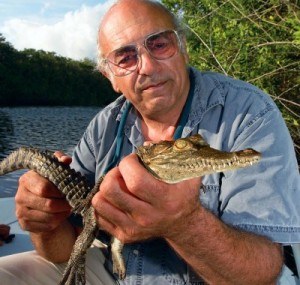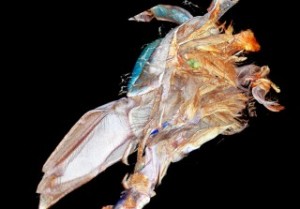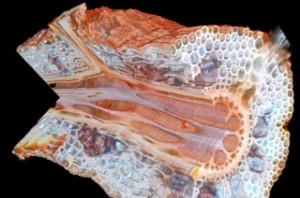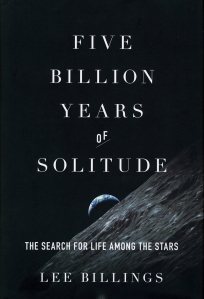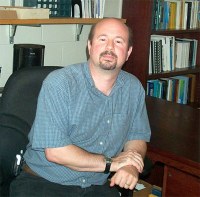Texas is a blue and white place, from its famous bluebonnet meadows and its vast azure skies dotted with white clouds, to the blue and white on the Lone Star state’s flag. But for three days in late October, Texas was extra blue and white, when Research On The Road rolled into town with Penn State laureate for the 2013-14 academic year, Kenneth Womack, associate dean for Academic Affairs and professor of English and integrative arts at Penn State Altoona.
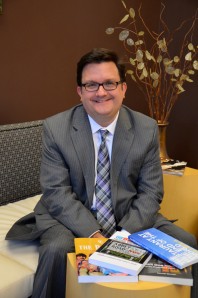
Penn State Laureate Ken Womack with books he has authored.
Research On The Road is a Penn State program that brings our faculty members to locations around the country with active Penn State alumni chapters for lively public talks on timely topics.

The topic this fall couldn’t have been more timely, a celebration of the Beatles on the 50th anniversary of the iconic band. Fortunately for us, Penn State’s laureate happens to be both an internationally recognized Beatles scholar as well as a native son of Texas. (Did you know that Texas is home to some of our largest and most active–and rapidly expanding–alumni chapters?)

Lake Lewisville, outside of Dallas, the location for our North Texas event.

Craig and Judy Micklow, North Texas chapter leadership.
Each of the three alumni chapters (all equally spirited and each locale turning out in large numbers for the events) would show us what makes them unique. The Penn State alumni in and around Dallas were organized go-getters and had the largest age range of the three chapters. Ask any member for the secret of their chapter’s success and they’ll tell you in two words: The Micklows. Craig and Judy Micklow have been running a tight ship for years as chapter president and treasurer, and do a phenomenal job. Our Research On The Road evening was a heartwarming mix of very young and very young-at-heart Penn Staters! The North Texas alumni also win the award for the most rousing Penn State team spirit, with a “We Are” chant led by Craig that shook the room! After folks mixed, mingled and enjoyed light refreshments, Ken took the stage for his entertaining and informative talk about the Beatles, little-known facts about their rise to fame and musical techniques, and the lasting impact of their legacy.

North Dallas alumni chapter members

Alumni and future alumni sample the appetizers.

- The youngest Penn Stater in the room.
A Beatles cover band played after the talk and inspired many to get up and shake a tail feather or two. People lingered until the very last note…what a great night!
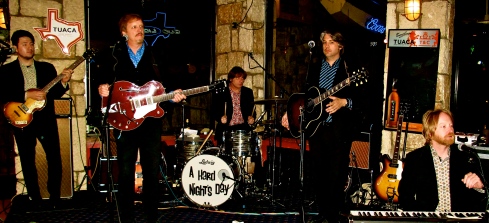
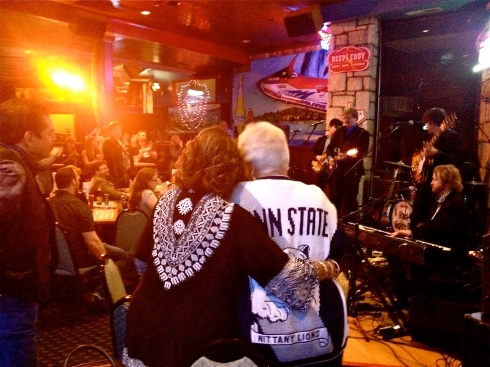
The next morning we headed down the road a piece, 250 miles of road, to be exact. Our Houston event couldn’t have happened without help from the fine folks from the Penn State Chapter of Greater Houston, headed up by chapter presidents Jen Lemanski and treasurer Greg Kelley, and the Woodlands Area Chapter president Robina Radar. Thanks to all of them!
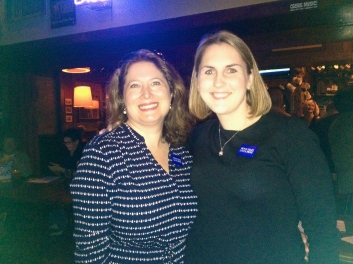
Melissa Beattie Moss (left) with Houston chapter president Jen Lemanski.
Houston is Ken Womack’s hometown and fittingly was our largest event, with about 150 people attending the evening talk. An article about our Research On The Road event in the Houston Chronicle (the largest newspaper in Texas and the sixth largest in the nation) didn’t hurt either.
The indoor/outdoor venue was perfect for our full house.
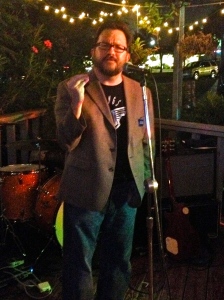
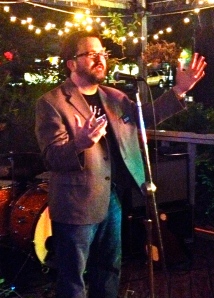
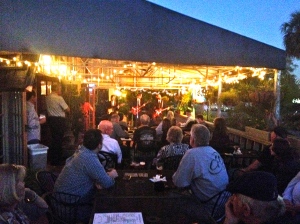
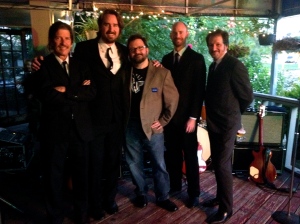
In addition to being our largest crowd, the Houston chapter distinguished itself by having perhaps the liveliest Question & Answer session of the three events. The other cities held their own, make no mistake, but Houston attendees included some really hardcore Beatles experts who tested—and fully appreciated—the depth of Ken’s scholarship on the topic.
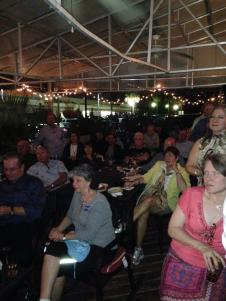
It was a “standing room only” crowd, including some folks lined up outside the establishment to hear Ken’s talk.
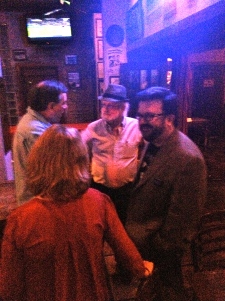
Ken’s voice was put to the test; he talked for hours!
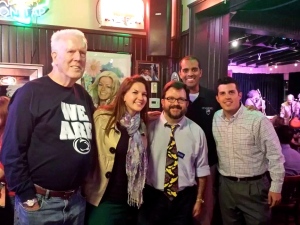
The leadership of PSUCenTex!
Last but by no means least on our Research On The Road trip: Austin! The PSU Central Texas chapter is in the very capable hands of president Sam Thomas, treasurer Steve Burke, and a whole team of active and energetic board members who helped make our Austin evening such a success.
The venue for our final Research On The Road event was Threadgill’s, an Austin institution steeped in music history. Janis Joplin got her start there, among others. The room was packed with over about 115 Central Texas area Penn State alumni and friends, all in the mood to listen, learn, celebrate Penn State scholarship—oh, and to dance too!

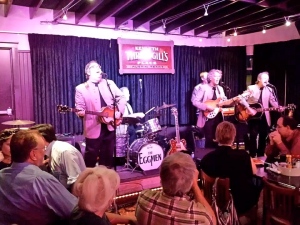
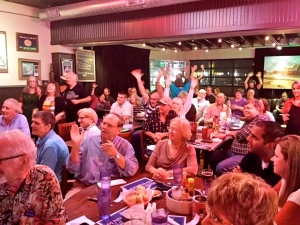
We were especially honored to have Penn State Altoona Chancellor and Dean Lori J. Bechtel-Wherry in attendance. Many thanks for the tremendous support!
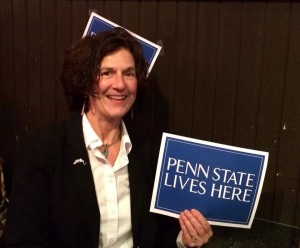
Chancellor Bechtel-Wherry showing that Penn State lives in Austin!
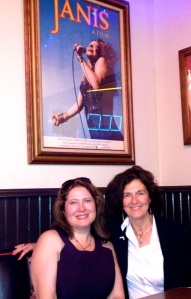
Melissa Beattie Moss, left, with Chancellor Bechtel-Wherry, in the Janis Joplin Memorabilia Room at Threadgill’s.
Even after hearing Ken’s talk on the Beatles several times, I still learned new things each time. What an inspired teacher he is! The Austin crowd was fascinated by his insights into such things as the band’s relationship with George Martin and their experiments with techniques like the “wind up piano” which relies on recording a song’s piano part at half-speed and then doubling it to normal speed to produce a harpsichord-like effect.
Our event in Austin was made even more special by the presence of Ken’s family and friends in the audience.
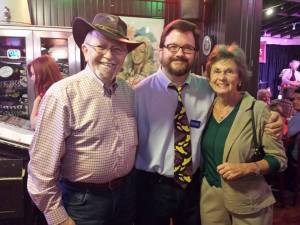
Penn State Laureate Ken Womack, native Texan, with his parents.
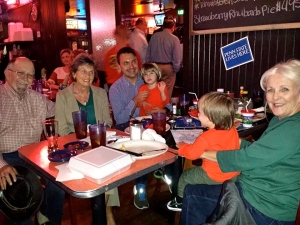
The Womack family enjoyed a front-row seat for Ken’s talk.
A personal highlight for me, throughout the week, was meeting Penn State alumni who rarely participated in their chapter’s events, but were inspired to connect with their alma mater because of Research On The Road! This is the kind of thing that makes the months of advance planning extra meaningful.
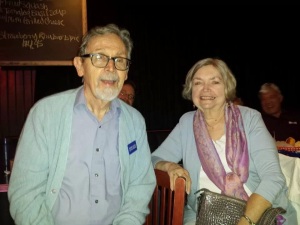
Mr. Wicker graduated from Penn State in 1969 and this was his first-ever event with the alumni chapter. Great to have you with us, sir!
It was sad to say “so long” to our Texan Penn Staters but it feels good to know that so many people were able to meet and learn from laureate Ken Womack and take pride in our University’s broad array of research strengths and deep commitment to teaching—including bringing life-long learning opportunities directly to our alumni chapters! Look for more adventures from Research On The Road this spring, y’all!
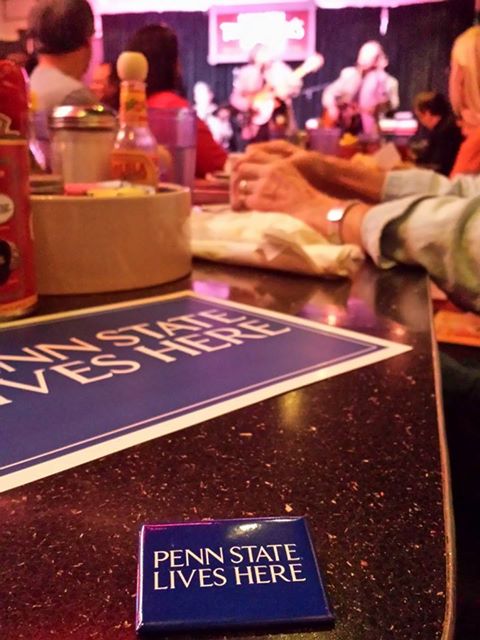
33.014315
-96.979761
Tags: Ken Womack, North Texas Alumni Chapter, Penn State Chapter of Greater Houston, Penn State chapter Woodlands area, Penn State Laureate, research on the road
